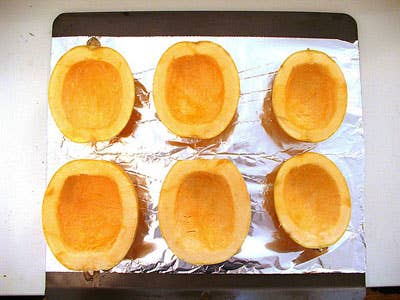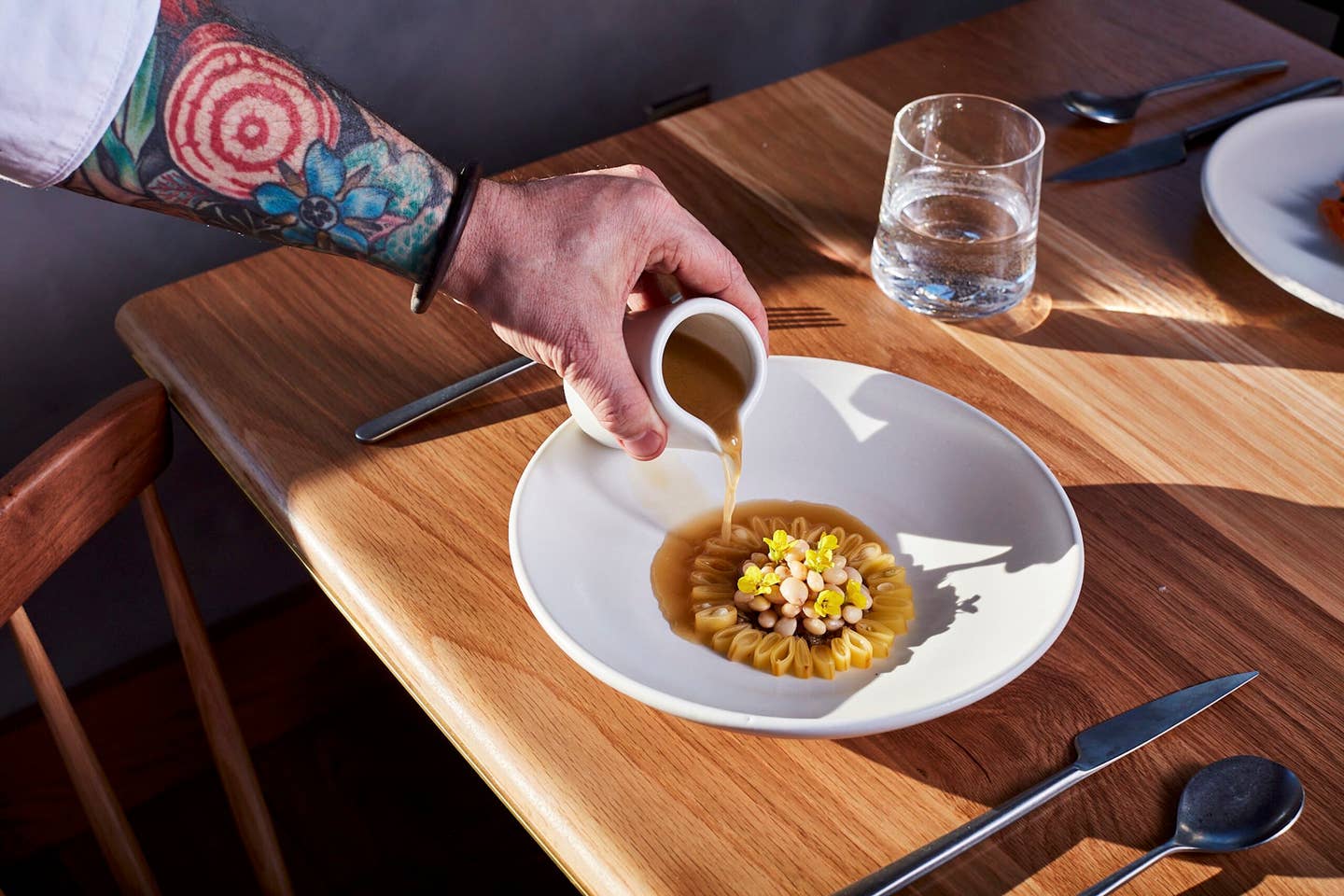
Three Winter Squashes
Right now at farmers' markets and grocery stores across the country, we're confronted with a dizzying array of pumpkins and squash. The typical reaction breaks down into three stages:
1) You say to yourself, "My god, what are all these things? Do they taste differently from each other?"
2) Overwhelmed, you buy a butternut squash or, feeling adventurous, maybe an acorn squash.
3) You buy a couple of other pumpkins for decoration, because you can't eat them, right?
But the fact is, these crazy gourds are very different from one another, and you can bust out of your squash-phobic rut by embracing some of the trippier and more psychedelic varieties.
Blue Hubbard Squash
If you've eaten canned pumpkin, you've had a Hubbard squash. Dense, creamy, and semi-sweet, it's the taste we most associate with pumpkin, but, as you'd expect from the source of canned pumpkin, it doesn't have a ton of flavor on its own. To make it delicious, you've got to treat it right.
Your first step is to clean and prepare it, and with these 20-pound monsters (which can keep for up to six months) that's not as easy as it sounds. Try this scrubbing-cleaving-and-scooping method, and then try this [simple risotto recipe](/article/Recipes/Risotto-with-Butternut-Squash-Leeks-and-Clams or this basic casserole. They do make great pies, but you've been eating so many pies already during the holiday, why not give this flan a try instead?
Feeling more confident about your Hubbard skills now? Then go for this curried pumpkin fettuccine with tomato chutney, truly the most ambitious and gorgeous thing anyone can do with the hulking Hubbard.
Spaghetti Squash
With an even milder flavor than a Hubbard squash, the spaghetti squash is best known for its texture: when cooked, its flesh comes apart in strands, making it an extremely cool substitute for pasta. Cooking spaghetti squash is easy, but you have to do it right. You don't need a microwave, despite what some of these recipes claim. It takes longer, but it's far better to just roast these squashes. Simply pierce their skins and let them sit in the oven for an hour or so. When they come out, they just need a little flavor laid over the top to make their taste come alive. You can go traditionally Italian, or you can use coriander, cumin, and cayenne to turn it into a bright Moroccan dish, and for a simple winter dish try this big bowl of roasted spaghetti squash with brown butter, sage, and ricotta.
Red Kuri Squash
Small, bright red, and sweet, red kuri squashes have several other names (Hokkaido pumpkin, uchiki kuri squash, and Japanese squash are three), and like the other squashes in this post, they have tough, thick skins. Because they've already got plenty of flavor, there's no need to bury them underneath other ingredients; one of the best things you can do is make a red kuri squash risotto or an easy gratin. A lot of red kuri squash recipes include a sharp-flavored ingredient, such as blue cheese in this fettuccine with roasted kuri squash and sage cream sauce or this breathtaking red kuri squash, cocoa nib, and Roquefort dessert. A pumpkin pie takes on new life (and becomes a cake) with this recipe for upside-down apple and red kuri squash cake.
Buying Tips
Season: All three of these squashes are in peak season in December.
Where to find it: Both supermarkets and farmers' markets should have at least spaghetti squash. If you have trouble finding Hubbard and red kuri squashes, Melissa's Produce is a great site to research suppliers of hard-to-find fruits and vegetables.
Price: Depending on the harvest and where you're shopping, these squash can range from $.88/pound all the way up to $2.50-$3 per pound. Blue Hubbards are usually the priciest because they're often the largest, with an average Blue Hubbard weighing in at 20 pounds. But as the holidays pass, the price usually drops due to falling demand.
Amanda Cohen is the chef and owner of Dirt Candy, a vegetarian restaurant in New York City.
Keep Reading
Continue to Next Story










